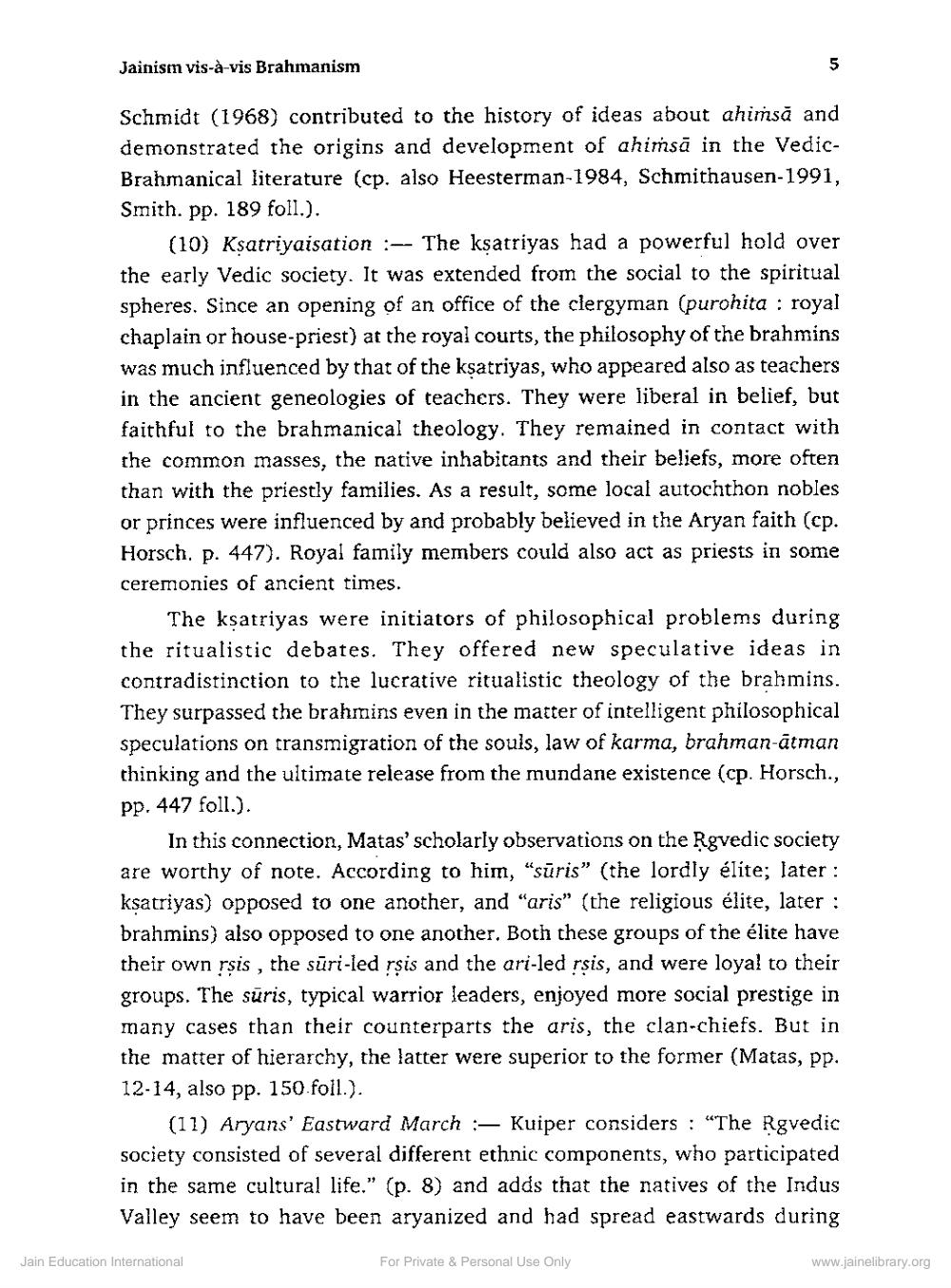Book Title: Jainism vis a vis Brahmanism Author(s): Bansidhar Bhatt Publisher: Z_Nirgranth_Aetihasik_Lekh_Samucchay_Part_1_002105.pdf and Nirgranth_Aetihasik_Lekh_Samucchay_Part_2 View full book textPage 5
________________ Jainism vis-à-vis Brahmanism Schmidt (1968) contributed to the history of ideas about ahimsă and demonstrated the origins and development of ahimsa in the VedicBrahmanical literature (cp. also Heesterman-1984, Schmithausen-1991, Smith. pp. 189 foll.). (10) Ksatriyaisation :--- The ksatriyas had a powerful hold over the early Vedic society. It was extended from the social to the spiritual spheres. Since an opening of an office of the clergyman (purohita : royal chaplain or house-priest) at the royal courts, the philosophy of the brahmins was much influenced by that of the ksatriyas, who appeared also as teachers in the ancient geneologies of teachers. They were liberal in belief, but faithful to the brahmanical theology. They remained in contact with the common masses, the native inhabitants and their beliefs, more often than with the priestly families. As a result, some local autochthon nobles or princes were influenced by and probably believed in the Aryan faith (cp. Horsch. p. 447). Royal family members could also act as priests in some ceremonies of ancient times. The ksatriyas were initiators of philosophical problems during the ritualistic debates. They offered new speculative ideas in contradistinction to the lucrative ritualistic theology of the brahmins. They surpassed the brahmins even in the matter of intelligent philosophical speculations on transmigration of the souls, law of karma, brahman-ātman thinking and the ultimate release from the mundane existence (cp. Horsch., pp. 447 foll.). In this connection, Matas' scholarly observations on the Rgvedic society are worthy of note. According to him, "sūris" (the lordly élite; later : ksatriyas) opposed to one another, and "aris" (the religious élite, later : brahmins) also opposed to one another. Both these groups of the élite have their own rsis , the sūri-led rsis and the ari-led rsis, and were loyal to their groups. The sūris, typical warrior leaders, enjoyed more social prestige in many cases than their counterparts the aris, the clan-chiefs. But in the matter of hierarchy, the latter were superior to the former (Matas, pp. 12-14, also pp. 150.foil.). (11) Aryans' Eastward March :- Kuiper considers : "The Rgvedic society consisted of several different ethnic components, who participated in the same cultural life.” (p. 8) and adds that the natives of the Indus Valley seem to have been aryanized and had spread eastwards during Jain Education International For Private & Personal Use Only www.jainelibrary.orgPage Navigation
1 ... 3 4 5 6 7 8 9 10 11 12 13 14 15 16 17 18 19 20 21 22 23 24 25 26 27 28 29 30 31 32 33 34 35 36 37 38 39 40 41 42 43 44 45 46 47
